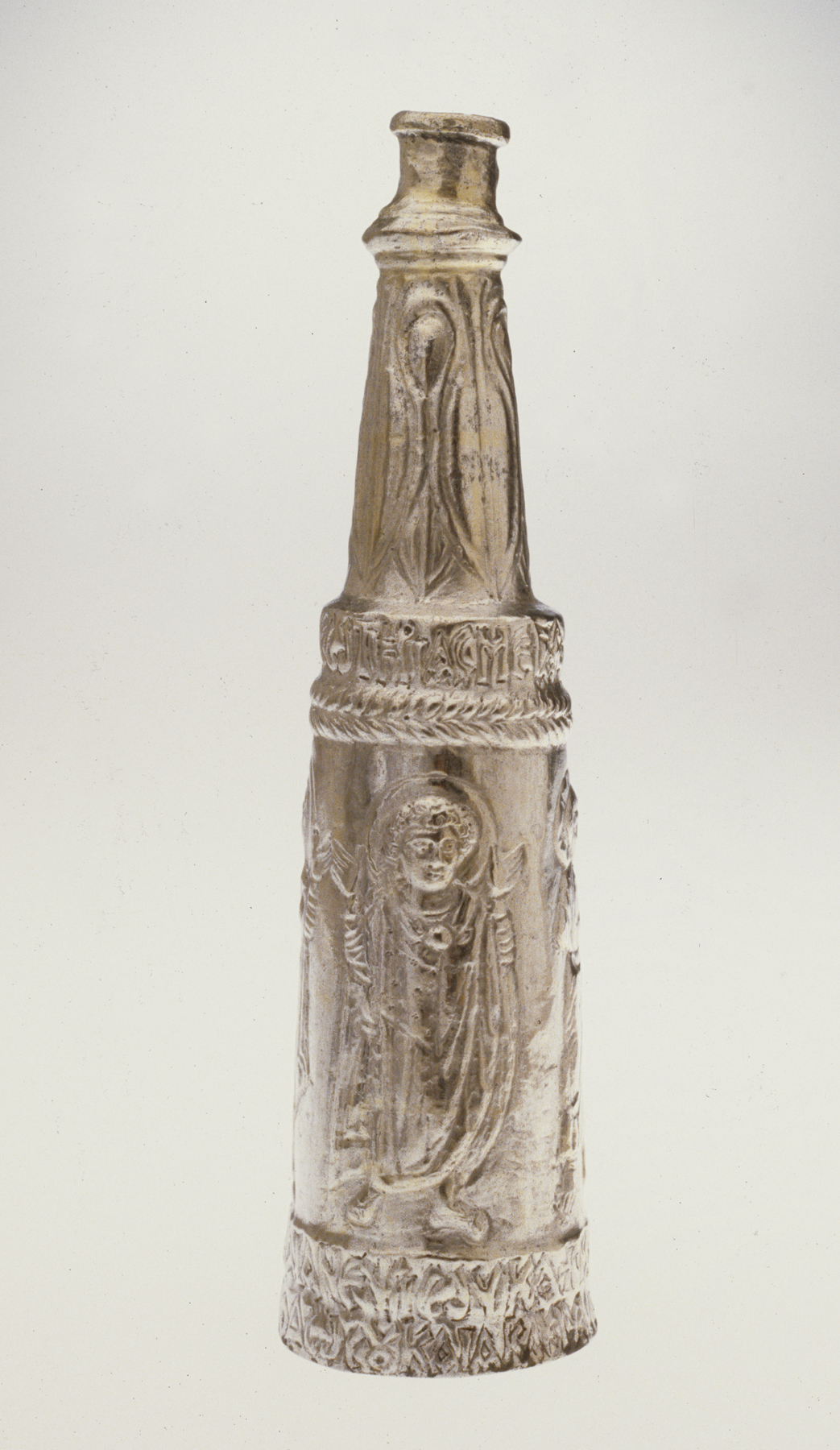Oil Flask
(Byzantium and Early Russia)
This flask is decorated with images of Christ, the Virgin, and two military saints (Sergios and Bacchos?), represented with the soft, voluminous drapery and staring eyes typical of the art of Byzantine Syria. The inscription tells how the donors, Megale and her family, gave this flask in fulfillment of a vow and for the eternal salvation of departed souls. The flask, the original lid and chain of which are now lost, was probably used to hold consecrated oil for the rite of baptism, or for the anointing of the sick or dying.
Inscription
Provenance
Provenance (from the French provenir, 'to come from/forth') is the chronology of the ownership, custody, or location of a historical object. Learn more about provenance at the Walters.
[Excavated in Syria, 1908-1910]; Tawfic Abucasem, Hama and Port Said, ca. 1913, by purchase; Joseph Brummer, Paris, ca. 1928, by purchase; Henry Walters, Baltimore, 1929, by purchase; Walters Art Museum, 1931, by bequest.
Exhibitions
| 1986 | Silver Treasure from Early Byzantium. The Walters Art Gallery, Baltimore. |
| 1984-1985 | Illuminated Manuscripts: Masterpieces in Miniature. The Walters Art Gallery, Baltimore. |
| 1947 | Early Christian and Byzantine Art. Baltimore Museum of Art, Baltimore. |
Measurements
H: 8 3/4 x Diam: 2 5/16 in. (22.3 x 5.8 cm); Diam at base: 2 5/16 in. (5.9 cm); Diam of outer spout: 7/8 in. (2.2 cm)
Credit Line
Acquired by Henry Walters, 1929
Location in Museum
Accession Number
In libraries, galleries, museums, and archives, an accession number is a unique identifier assigned to each object in the collection.
In libraries, galleries, museums, and archives, an accession number is a unique identifier assigned to each object in the collection.
57.639


